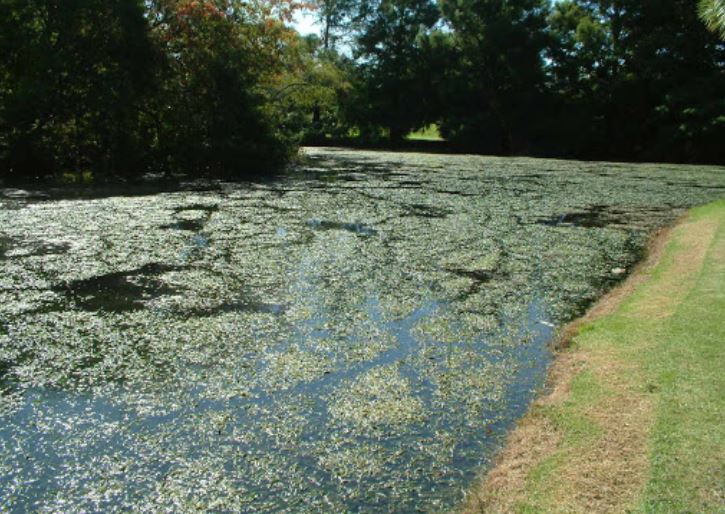
Aeration is an integral part of your entire pond ecosystem and is also a tool to effectively manage aquatic plant growth. The most important benefit of supplemental aeration in your pond is buffering against aquatic plant die-off. Aeration can also help with limiting the number of plants that grow by limiting sunlight penetration and the breakdown of nutrients.
There are many types of aquatic plants that can be a nuisance to you and your pond. There are several effective ways of treating these problems, whether it is biological, physical, changing the pond environment, or chemical treatments. Chemical treatments are very popular because they require less effort than physical removal of the plants, work faster than most biological treatments, and are not as large of a project as changing the pond environment. The chemicals will kill off the aquatic plants and be fairly effective in doing so.
When the plants start to die off is when aeration is needed. The dead plant material will begin to be decomposed by bacteria on the bottom. The decomposition process can occur aerobically (with oxygen) or anaerobically (without oxygen). As long as there is oxygen available, it will take place aerobically. This is good because aerobic decomposition is faster and creates less harmful by-products in the process. However, the process uses up a lot of the available dissolved oxygen in the water, much faster than can be naturally added in most cases. Once the oxygen is depleted, decomposition switches to anaerobic and without oxygen fish and other aquatic organisms die.
Having supplemental aeration in a pond before, during, and after will help mix the water column, and with some chemicals, increase their effectiveness. After the treatment, the added oxygen will allow for aerobic decomposition to take place and provide enough dissolved oxygen for your fish to survive during the process.
Surface agitation caused by an aeration device is also important in the battle with aquatic plants. Creating water movement and waves helps eliminate stagnant water areas where aquatic plants thrive. The agitation also helps refract some of the incoming sunlight, limiting the amount available for the plants.
Aeration and agitation is also very important in what it takes out of the pond. During the aerobic decomposition process, oxygen is used. A byproduct of this process is carbon dioxide, which is a key component to plant growth and is used during photosynthesis. The surface agitation caused by aeration breaks up the water by splashing. This provides amply surface area of the water droplets to “vent” the carbon dioxide. Carbon dioxide levels in the water can be much higher than the air, therefore, when the water is exposed to the air, the carbon dioxide will leave the high concentration area of the water to the lower concentration area, air. Some nutrients in the water are also volatile and can be vented when the water is exposed to the air.
Parklink offers a big range of lake aeration equipment. Click here to see more.
